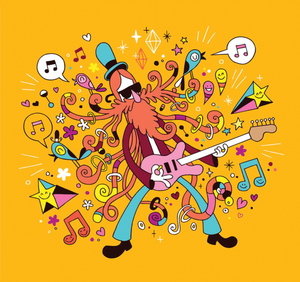Beat Box
An Arduino-compatible board combines cool audio features, 12 touch sensors, and electric paint to make the most excellent (and enjoyable) educational board yet.

Lead Image © aliasching, 123RF.com
An Arduino-compatible board combines cool audio features, 12 touch sensors, and electric paint to make the most excellent (and enjoyable) educational board yet.
The Touch Board by Bare Conductive [1] is as interesting as educational Arduino-compatible boards get (Figure 1). First off, it's geared toward interactive and audio inventions. Although it's based on the Arduino Leonardo [2], with all the familiar I/O ports along its upper edge, it has a set of 12 touch sensors. Aimed squarely at educators, the Touch Board allows users to create touch-based and, as you will see, gesture-based gadgets using an electric paint also provided by the company.
One of the easiest things you can do immediately after unboxing the board is play sounds when one of the sensors is triggered, so I'll begin by showing you how to get started with the touch sensors.
The board I got already had an SD card inserted, so all I had to do was plug it in through the USB port, hook up some headphones, and touch one of the sensors. The card supplied with the Touch Board contains a series of audio explanations about the board itself split over 12 tracks, each assigned to a sensor. Touching a sensor starts the playback of the corresponding track. To change them, all you have to do is copy your own tracks over them onto the board.
[...]
Pages: 6
Price $15.99
(incl. VAT)